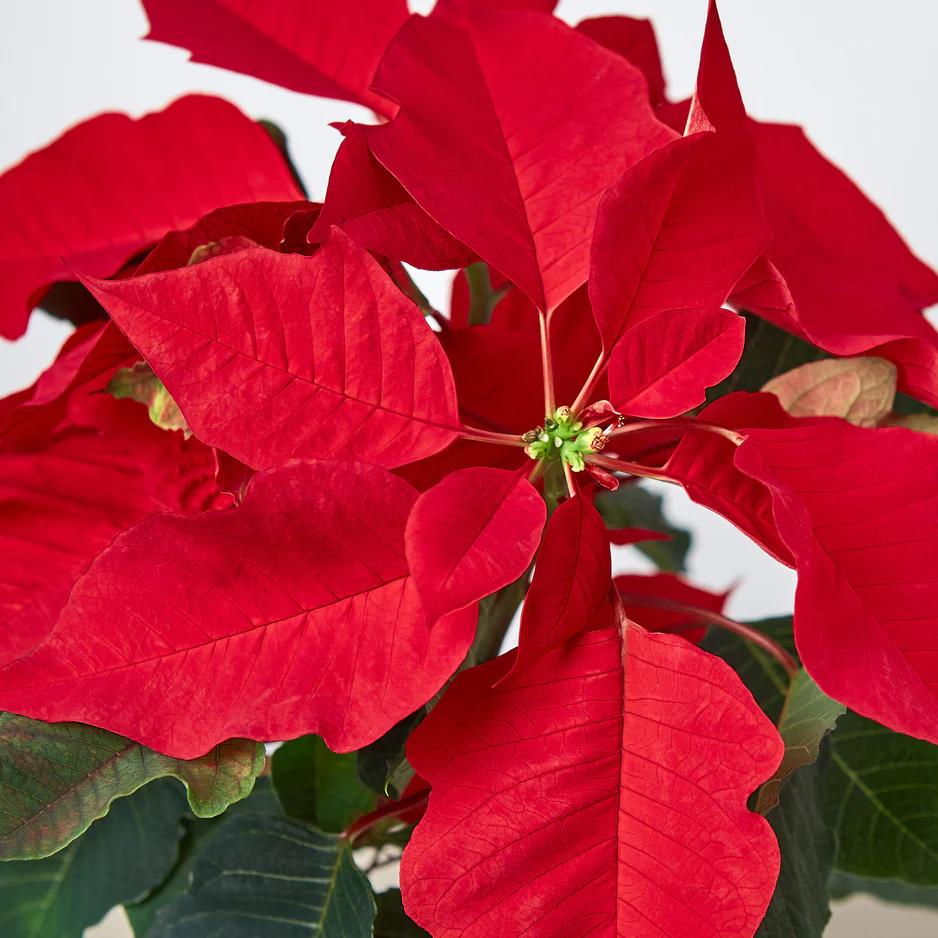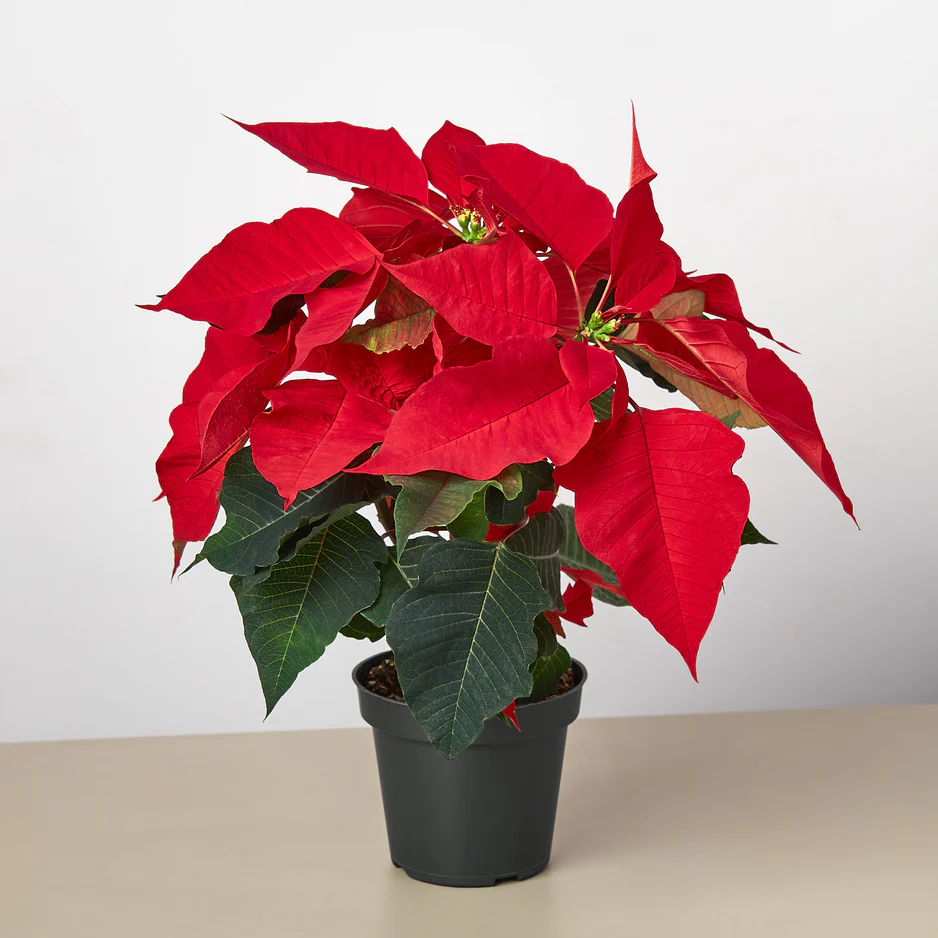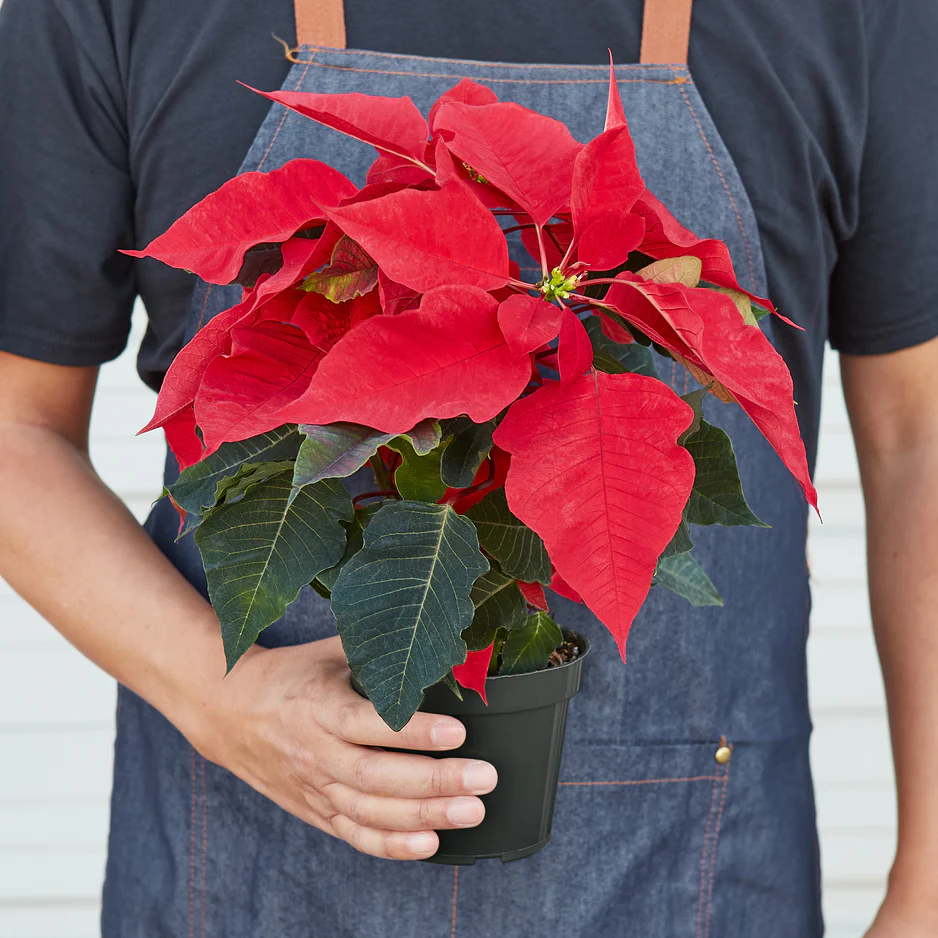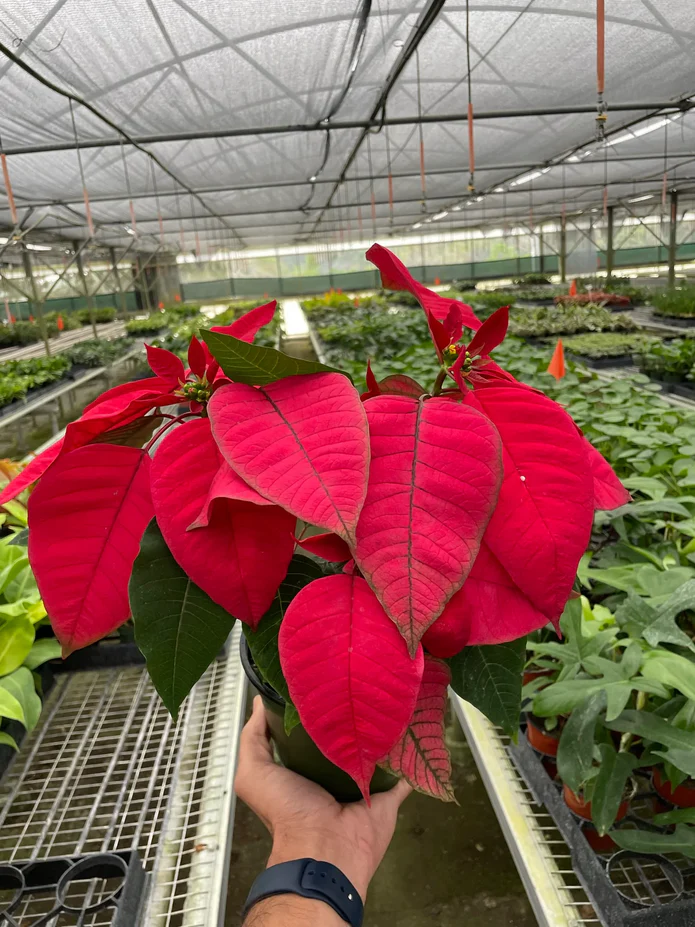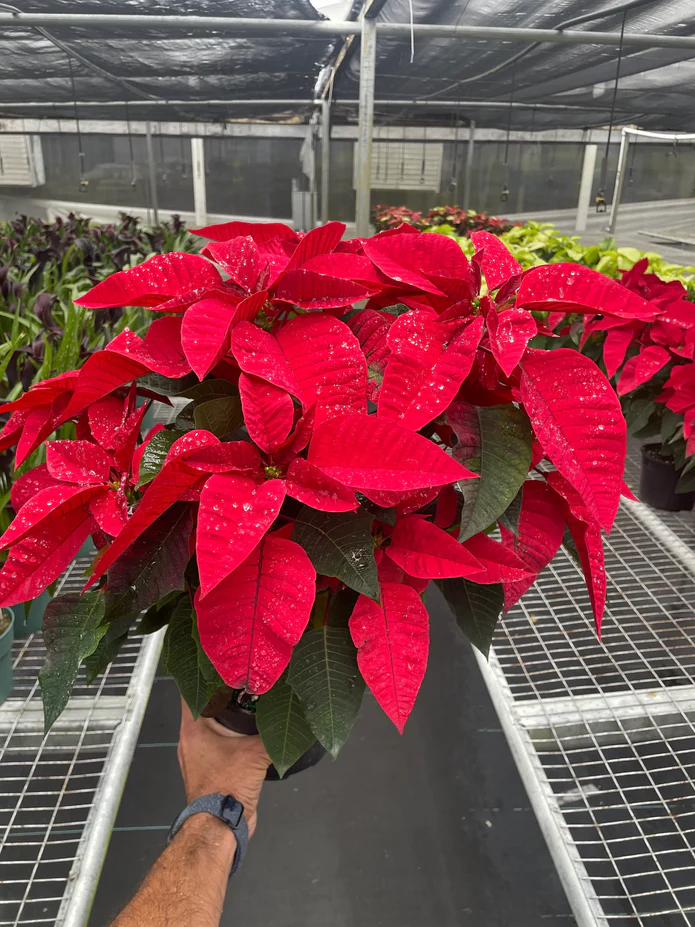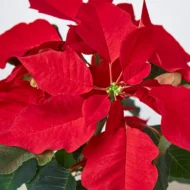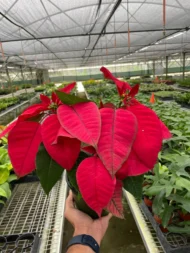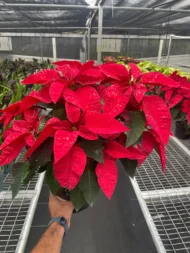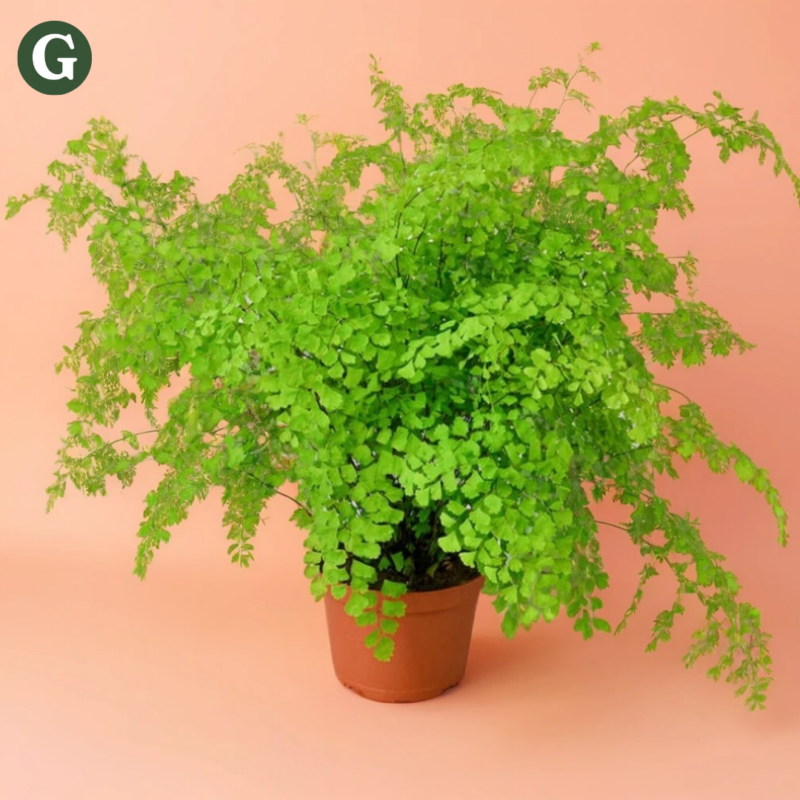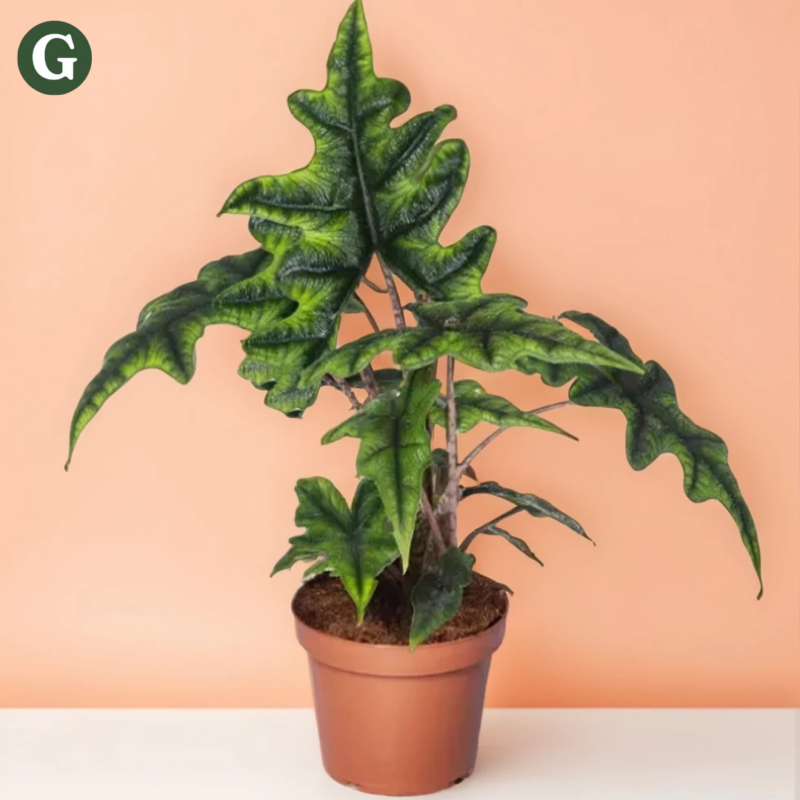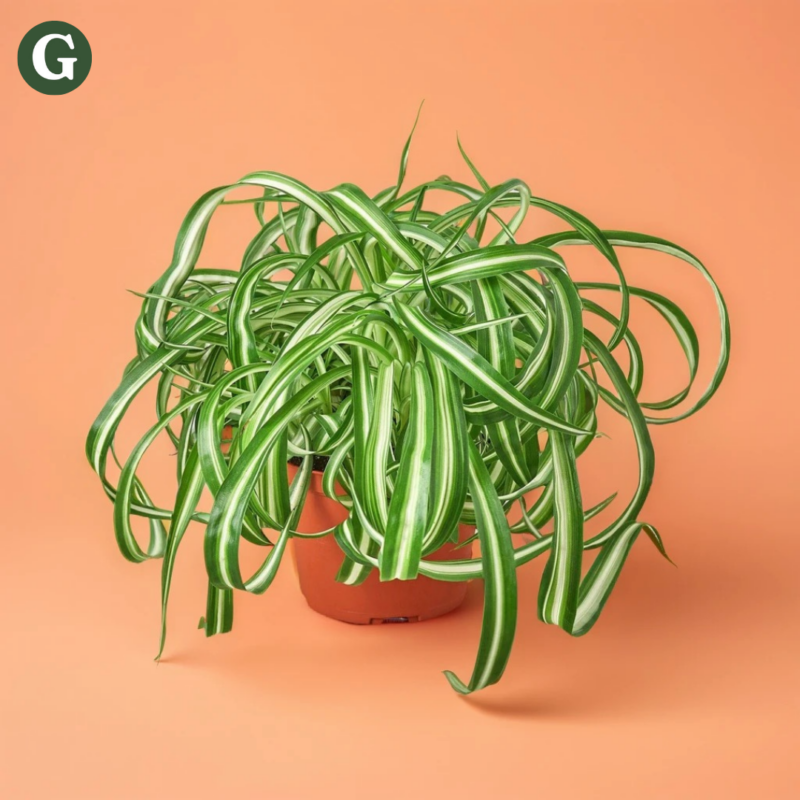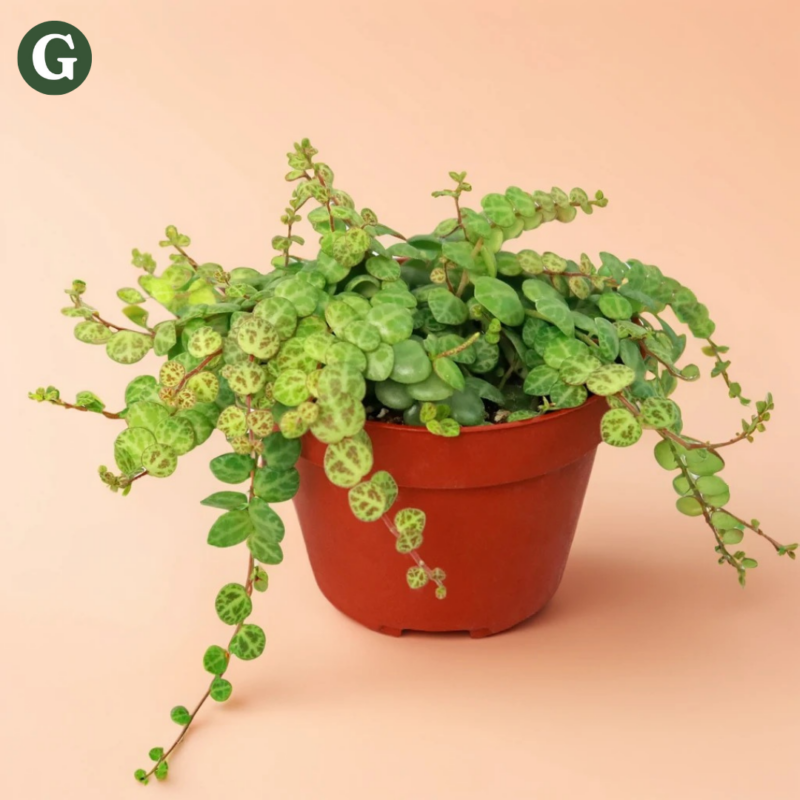Poinsettia Red
Botanical Name: Euphorbia pulcherrima
Common Name(s): Poinsettia Red
Poinsettia Red is the classic and most popular variety of the Poinsettia plant, widely known for its vibrant red bracts that resemble large, showy petals surrounding tiny, yellow flowers. This festive plant is a favorite during the holiday season, often used as decoration in homes and offices. Typically, Poinsettia Red grows to about 12-18 inches tall, making it a perfect choice for tabletops, windowsills, and holiday displays.
Poinsettia Red thrives in bright, indirect light, which helps it maintain its vivid color. It prefers well-draining soil and should be watered when the top inch of the soil feels dry. Overwatering can cause root rot, so it’s important to ensure the soil drains well. Poinsettias should be kept in a warm environment (65-75°F or 18-24°C) and should be protected from drafts or sudden temperature changes.
Air Purifying Qualities:
- Toxin Removal: Like other Poinsettias, this plant can contribute to the removal of common indoor toxins, such as formaldehyde, benzene, and xylene, making it a subtle air purifier for your space.
- Oxygen Production: Poinsettia Red absorbs carbon dioxide and releases oxygen, helping to freshen the air in your home.
Note: Poinsettias are mildly toxic to pets (cats and dogs) if ingested, causing mild stomach irritation. Keep the plant out of reach of curious pets to avoid any discomfort.
Care Insights & Expert Tips
- Avoid drafts: Protect your Poinsettia from cold drafts, as they can cause leaf drop.
- Fertilize sparingly: Feed your Poinsettia with a balanced liquid fertilizer diluted to half strength once a month in the summer and spring.
- Monitor for pests: Keep an eye out for common houseplant pests like mealybugs and spider mites. Treat infestations promptly with insecticidal soap or neem oil.
- Pruning: After the holiday season, prune your Poinsettia to encourage new growth.
- Seasonal care: The Poinsettia Red is a short-day plant, meaning it requires specific light conditions to bloom. To encourage reblooming, provide 12-14 hours of darkness each night for 5-6 weeks during the fall.

Visit our plant care library
Find essential tips to keep your plants thriving, vibrant, and healthy.
